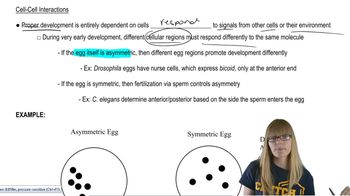The human insulin gene contains a number of sequences that are removed in the processing of the mRNA transcript. In spite of the fact that bacterial cells cannot excise these sequences from mRNA transcripts, explain how a gene like this can be cloned into a bacterial cell and produce insulin.
Although many cloning applications involve introducing recombinant DNA into bacterial host cells, many other cell types are also used as hosts for recombinant DNA. Why?
 Verified step by step guidance
Verified step by step guidance
Verified Solution
Key Concepts
Recombinant DNA Technology

Host Cell Selection

Applications of Cloning

Using DNA sequencing on a cloned DNA segment, you recover the nucleotide sequence shown below. Does this segment contain a palindromic recognition sequence for a restriction enzyme? If so, what is the double-stranded sequence of the palindrome, and what enzyme would cut at this sequence? (Consult Figure 20.1 for a list of restriction sites.)
CAGTATGGATCCCAT
As genetic testing becomes widespread, medical records will contain the results of such testing. Who should have access to this information? Should employers, potential employers, or insurance companies be allowed to have this information? Would you favor or oppose having the government establish and maintain a central database containing the results of individuals' genome scans?
Restriction sites are palindromic; that is, they read the same in the 5' to 3' direction on each strand of DNA. What is the advantage of having restriction sites organized this way?
